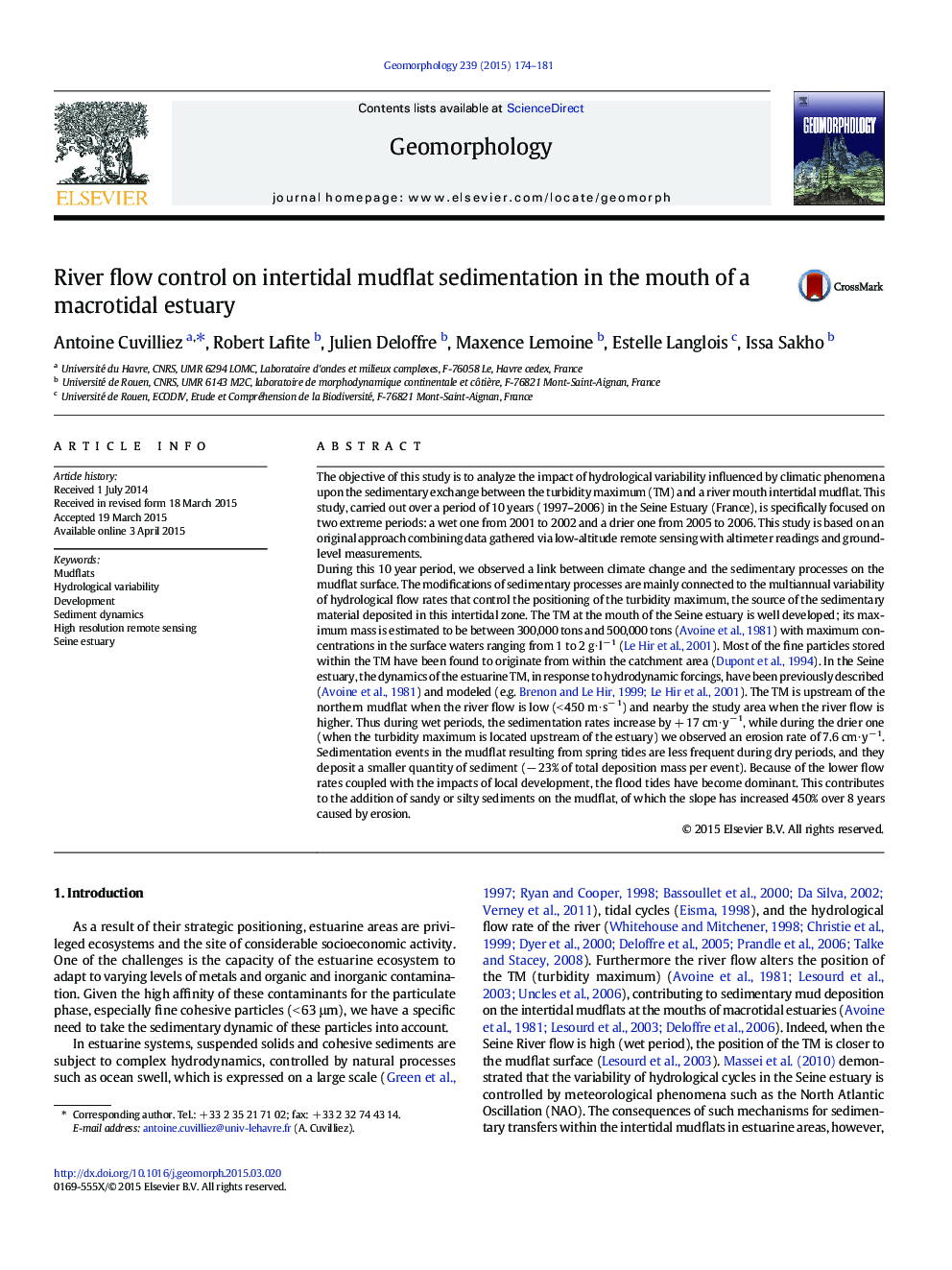| Article ID | Journal | Published Year | Pages | File Type |
|---|---|---|---|---|
| 4684291 | Geomorphology | 2015 | 8 Pages |
Abstract
During this 10 year period, we observed a link between climate change and the sedimentary processes on the mudflat surface. The modifications of sedimentary processes are mainly connected to the multiannual variability of hydrological flow rates that control the positioning of the turbidity maximum, the source of the sedimentary material deposited in this intertidal zone. The TM at the mouth of the Seine estuary is well developed; its maximum mass is estimated to be between 300,000 tons and 500,000 tons (Avoine et al., 1981) with maximum concentrations in the surface waters ranging from 1 to 2 g â lâ 1 (Le Hir et al., 2001). Most of the fine particles stored within the TM have been found to originate from within the catchment area (Dupont et al., 1994). In the Seine estuary, the dynamics of the estuarine TM, in response to hydrodynamic forcings, have been previously described (Avoine et al., 1981) and modeled (e.g. Brenon and Le Hir, 1999; Le Hir et al., 2001). The TM is upstream of the northern mudflat when the river flow is low (< 450 m â sâ 1) and nearby the study area when the river flow is higher. Thus during wet periods, the sedimentation rates increase by + 17 cm â yâ 1, while during the drier one (when the turbidity maximum is located upstream of the estuary) we observed an erosion rate of 7.6 cm â yâ 1. Sedimentation events in the mudflat resulting from spring tides are less frequent during dry periods, and they deposit a smaller quantity of sediment (â 23% of total deposition mass per event). Because of the lower flow rates coupled with the impacts of local development, the flood tides have become dominant. This contributes to the addition of sandy or silty sediments on the mudflat, of which the slope has increased 450% over 8 years caused by erosion.
Related Topics
Physical Sciences and Engineering
Earth and Planetary Sciences
Earth-Surface Processes
Authors
Antoine Cuvilliez, Robert Lafite, Julien Deloffre, Maxence Lemoine, Estelle Langlois, Issa Sakho,
